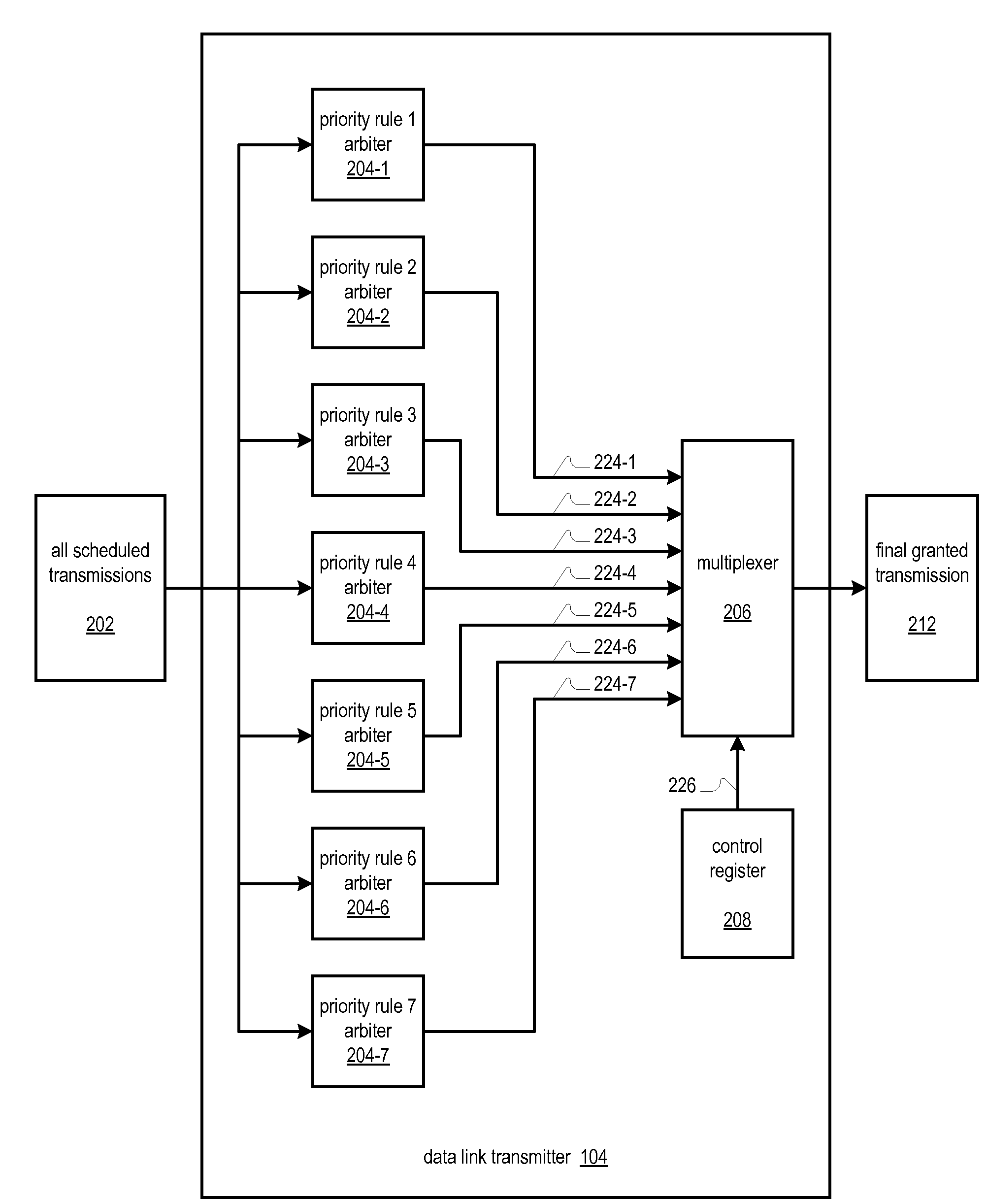Pci-express data link transmitter employing a plurality of dynamically selectable data transmission priority rules
a data link and priority rule technology, applied in the field of priority scheduling of serial data link transmission, can solve the problems of wasting transmission bandwidth, unable to achieve the effect of collapsing the ack dllps, and unable to achieve the effect of achieving the effect of reducing the number of acks
- Summary
- Abstract
- Description
- Claims
- Application Information
AI Technical Summary
Benefits of technology
Problems solved by technology
Method used
Image
Examples
Embodiment Construction
[0024]The present specification describes embodiments that, among other things, address the performance problem described above by providing a PCI-Express data link layer transmitter that defines a plurality (seven in one embodiment) of priority rules for scheduling transmissions, i.e., packets. The data link transmitter includes a programmable control register (3-bits in one embodiment) that chooses one of the plurality of priority rules to be used to select the next packet for transmission. Each priority rule may provide improved performance in a corresponding specific transaction pattern. For example, a high-end 3D PCI-Express display card requests a large amount of upstream memory read (MRd) cycles to a PCI-Express Root Complex (RC). The RC needs to transmit back-to-back completion TLPs in order to achieve better transmission performance. Thus, in a transaction pattern with a large amount of upstream MRd cycles, it is advantageous for the data link transmitter to employ one of t...
PUM
 Login to View More
Login to View More Abstract
Description
Claims
Application Information
 Login to View More
Login to View More - R&D
- Intellectual Property
- Life Sciences
- Materials
- Tech Scout
- Unparalleled Data Quality
- Higher Quality Content
- 60% Fewer Hallucinations
Browse by: Latest US Patents, China's latest patents, Technical Efficacy Thesaurus, Application Domain, Technology Topic, Popular Technical Reports.
© 2025 PatSnap. All rights reserved.Legal|Privacy policy|Modern Slavery Act Transparency Statement|Sitemap|About US| Contact US: help@patsnap.com



